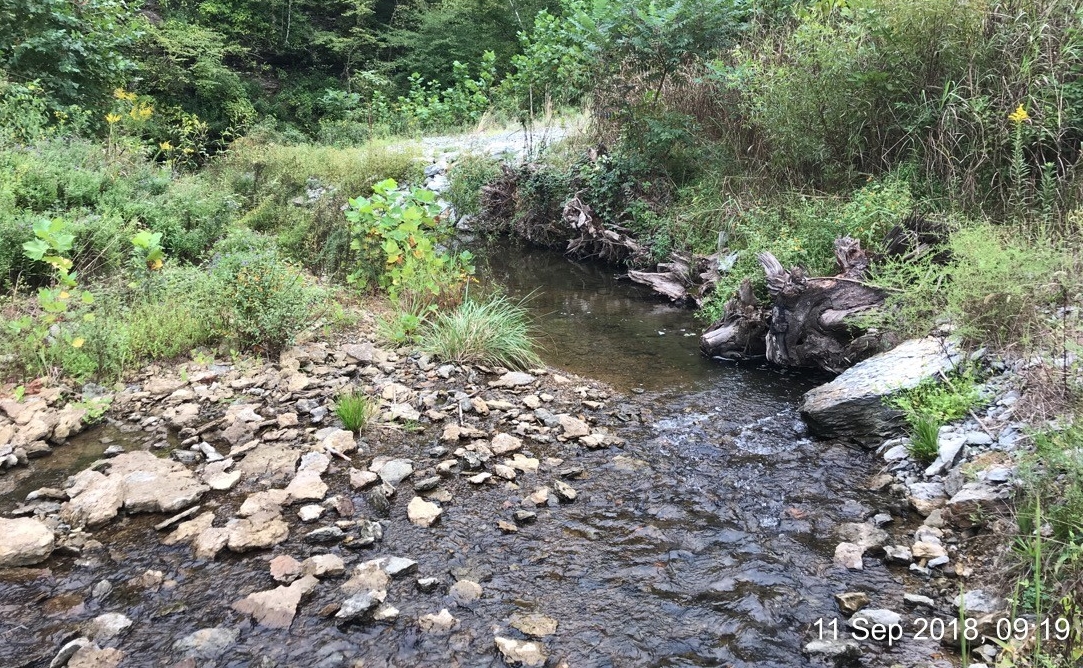Environmental Mitigation Office


Ben Brown
Mitigation Manager
Ben.Brown@tn.gov
(615) 253-2474
The Tennessee Department of Transportation (TDOT) Environmental Mitigation Office is responsible for providing compensatory mitigation to offset unavoidable stream and wetland impacts from transportation projects through a process referred to as compensatory mitigation. The TDOT Environmental Mitigation Office is responsible for the design and implementation of compensatory mitigation plans, as well as ensuring that all mitigation projects are developed and documented in accordance with applicable state and federal regulations and guidance.
According to the U.S. Environmental Protection Agency (EPA) Section 404 of the Clean Water Act, compensatory mitigation methods include restoration (re-establishment or rehabilitation), establishment (creation), enhancement, and/or preservation of wetlands, streams and other aquatic resources for the purposes of offsetting unavoidable adverse impacts. Compensatory mitigation is required for certain TDOT transportation projects, as part of the permitting process through the Tennessee Department of Environment and Conservation (TDEC) and the U.S. Army Corps of Engineers (USACE).
The Mitigation Sequence
The 2008 Federal Mitigation Rule & Section 404 Clean Water Act regulations require that permit applicants:
- Step 1: Avoid – Adverse impacts to streams, wetlands, and other aquatic resources are to be avoided and no discharge shall be permitted if there is a practicable alternative with less adverse impact.
- Step 2: Minimize – If impacts to streams, wetlands, and other aquatic resources cannot be avoided, appropriate and practicable steps to minimize impacts must be taken.
- Step 3: Compensate – Appropriate and practicable compensatory mitigation is required for unavoidable adverse impacts to streams and wetlands which remain.
Compensatory Mitigation Methods
In those cases where compensatory mitigation is required in order to offset unavoidable adverse impacts to streams, wetlands, or other aquatic resources, the TDOT Environmental Mitigation Office provides the required mitigation through the use of restoration, establishment, enhancement, and/or preservation. A description of each of these compensatory mitigation methods is shown below.
- Restoration – re-establishment or rehabilitation of a stream, wetland, or other aquatic resource with the goal of returning natural or historic functions and characteristics to a former or degraded resource
- Establishment – development or creation of a stream, wetland, or other aquatic resource where a resource did not previously exist through manipulation of the physical, chemical, and/or biological characteristics of the site
- Enhancement – activities conducted within streams, wetlands, or other aquatic resources which heighten, intensify, or improve one or more resource functions. Enhancement is typically undertaken for a specific purpose, such as to improve water quality, flood control, or wildlife habitat
- Preservation – permanent protection of ecologically important streams, wetlands, or other aquatic resources through the implementation of appropriate legal and physical means (conservation easements, title transfers, etc.)
Compensatory Mitigation Mechanisms
The TDOT Environmental Mitigation Office utilizes various mechanisms for providing compensatory mitigation to offset unavoidable impacts from transportation projects. By using the mechanisms shown below and working with the TDOT Ecology and Permits Office staff, the required compensatory mitigation is obtained, and the environmental permits necessary for construction of the transportation project are acquired.
- Mitigation Banks - A mitigation bank is a wetland, stream or other aquatic resource area that has been restored, established, enhanced, or preserved. This resource area is then set aside to compensate for future impacts to aquatic resources resulting from permitted activities.
- In-Lieu Fee Programs - A permit applicant may make a payment to an in-lieu fee program that will conduct wetland, stream or other aquatic resource restoration, creation, enhancement, or preservation activities. In-lieu fee programs are generally administered by government agencies or non-profit organizations that have established an agreement with the regulatory agencies to use in-lieu fee payments collected from permit applicants.
- Permittee-Responsible Mitigation - A permittee may be required to provide compensatory mitigation through an aquatic resource restoration, establishment, enhancement and/or preservation activity. This compensatory mitigation may be provided at or adjacent to the impact site (i.e., on-site mitigation) or at another location, usually within the same watershed as the permitted impact (i.e., off-site mitigation).
Resources
TDOT Construction Project Bid Lettings
EPA: Section 404 of the Clean Water Act – Compensatory Mitigation
Current Stream Mitigation Estimates
Updates coming soon.